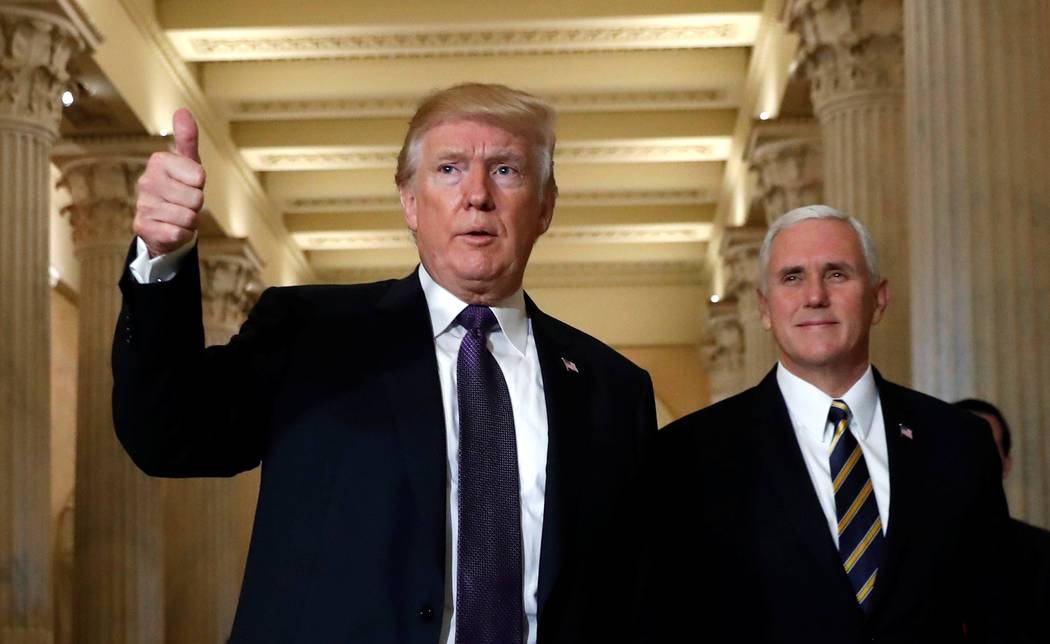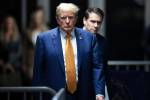COMMENTARY: Donald Trump’s trade agenda: Will it be a dead end?
Most Americans likely think that our trade policies have been largely the same since the Republic’s earliest days. The assumptions are that we’re free traders now and always have been; also, that we’ve long been a manufacturing power, boosting exports. If we sometimes lose in global competition, the main cause is that other countries don’t play fair.
The truth is more complicated, as economist Douglas Irwin of Dartmouth College shows in his monumental study of U.S. trade policy since the Revolution, “Clashing over Commerce.”
Irwin quickly dispels the notion that manufacturing has traditionally characterized U.S. exports. He writes:
“Prior to the Civil War, food and raw materials (wheat and cotton) comprised about two-thirds of exports, and manufactured goods (clothing and metal goods) comprised about two-thirds of imports.” Only toward the end of the 1800s did the United States emerge as a true industrial powerhouse.
Similarly, tariffs — taxes on imports — were high in the 19th century by modern standards. In those days, they served as the government’s main source of revenue. Later in the century, they were defended as protecting American firms and workers against foreign competition.
Steve Bannon, Trump’s former chief strategist, has cited this history as justifying more protectionism to promote American industry. Irwin and many economists disagree.
A number of factors favored U.S. manufacturing, they say: the growing size of the U.S. market; relatively stable government; the ability of U.S. firms to buy or steal new technologies from foreigners — and their own capacity to innovate. Tariffs were cut before the Civil War; if protectionism was so critical to U.S. industry, manufacturing’s expansion would have stalled. It didn’t.
The death of high tariffs occurred during the Great Depression and World War II. The infamous Smoot-Hawley tariff, enacted in 1930, raised rates on 890 products. This was widely seen as aggravating the Depression. After the war, U.S. industry dominated the world economy and there was little fear of imports.
Meanwhile, Europe and Japan were largely destroyed. Trade liberalization helped Europe and Japan restart their economies by exporting. This enabled them to earn scarce dollars to buy food, fuel and machinery, mostly from the United States.
What made America great in the 1950s and 1960s were the strength of its economy and the recognition that freer trade was a powerful political force promoting prosperity and cementing Western alliances.
It is this system that Trump is repudiating on the grounds that it has backfired on U.S. workers and firms.
To be sure, the United States should be more aggressive in pursuing trade complaints against countries that steal intellectual property (patents) or engage in dumping and illegal subsidization of exports.
Still, these are not the major sources of our trade deficits. That distinction belongs to the dollar’s status as the major global currency, used to conduct trade and cross-border investment.
This drives the dollar’s value higher, making U.S. exports more expensive and U.S. imports cheaper. Given the nature of the resulting trade deficits — and as is obvious from the economy’s present state — the United States can achieve “full employment” and run trade deficits simultaneously.
Having misdiagnosed the problem, Trump has embraced protectionist solutions. He withdrew from the Trans-Pacific Partnership, an agreement with 11 other countries, thereby antagonizing these nations and weakening American influence over the region’s trading practices. China is the obvious alternative.
Now Trump is offending Canada and Mexico by demanding major changes in the North American Free Trade Agreement.
Naturally, Trump appears late in Irwin’s story. A harsh judgment is possible: Trump trade leads to a dead end. But Irwin is more judicious, writing: “Whether the Trump administration marks a turning point in U.S. trade policy, or just one with strong posturing on trade issues, remains to be seen. … [At the least, Trump] portended a loss of U.S. international economic leadership.” Time will tell.
Robert Samuelson is a Washington Post columnist.




























